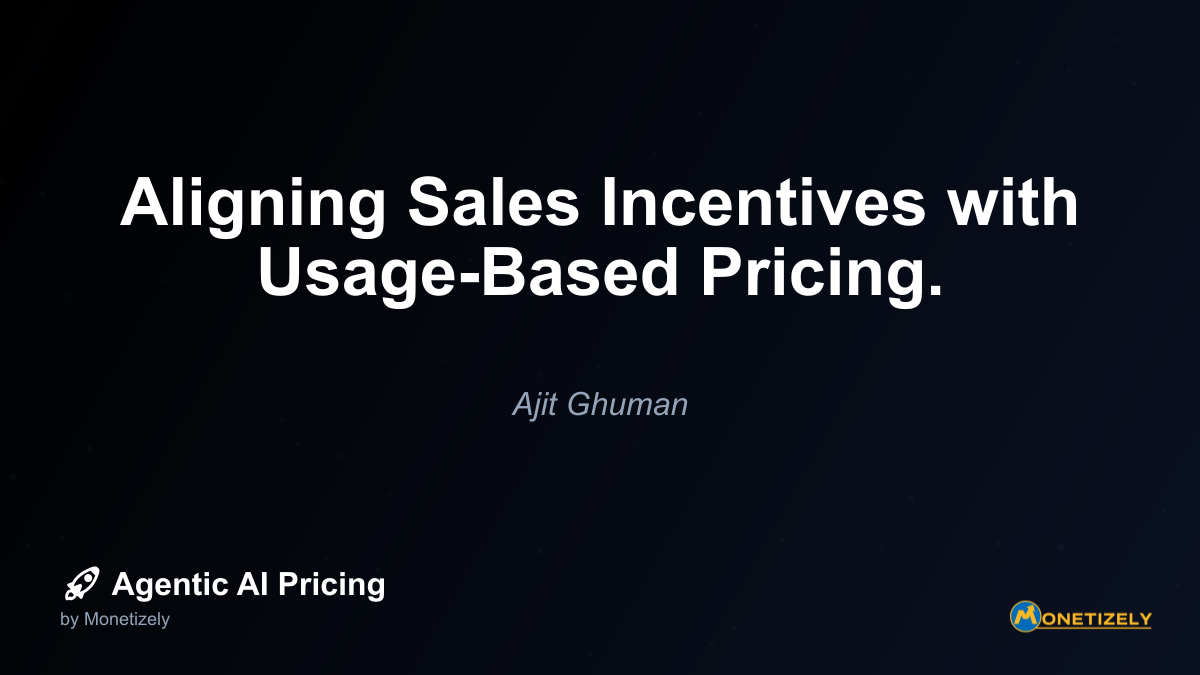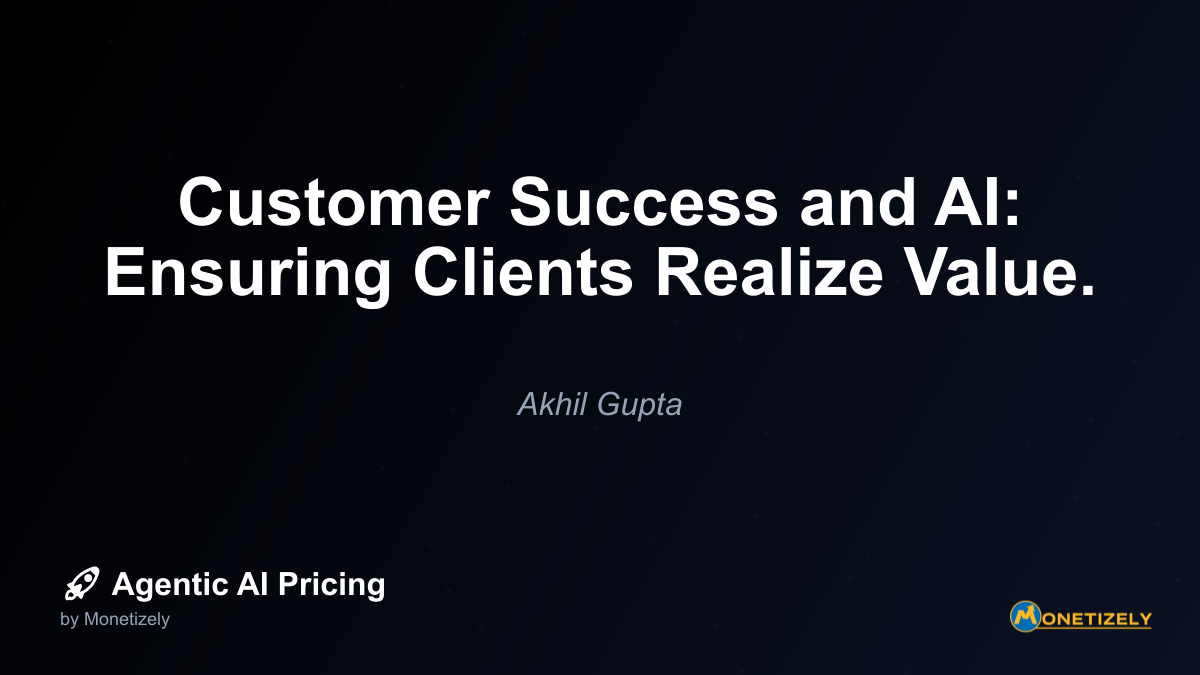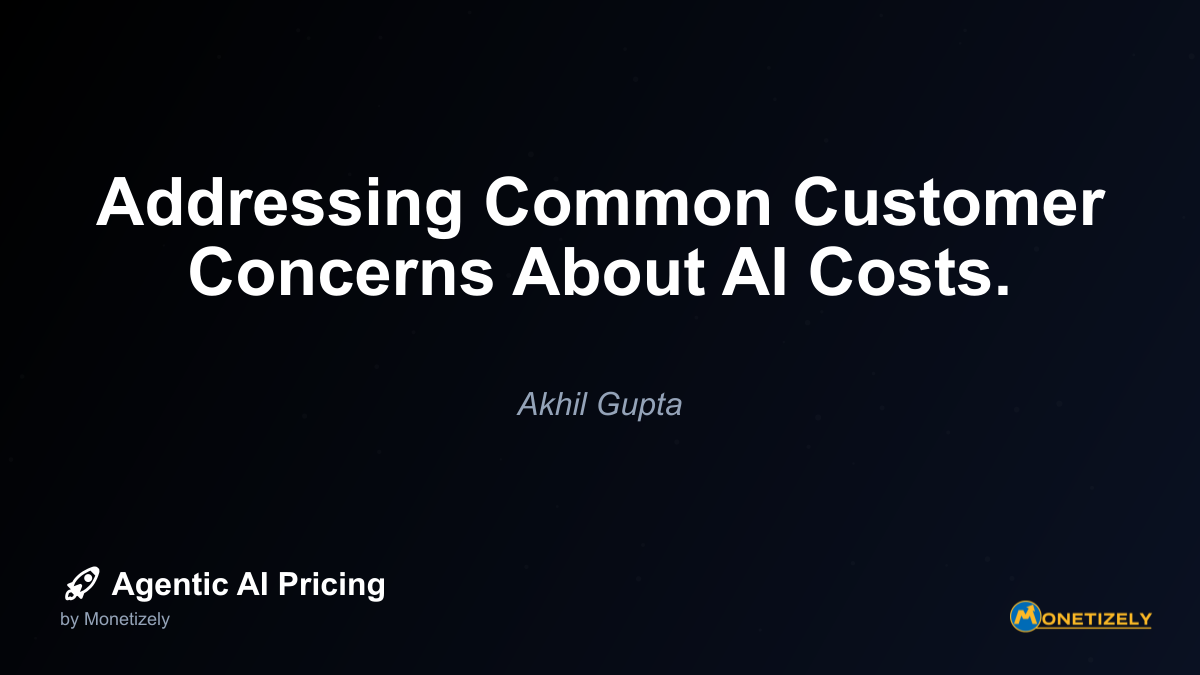· Ajit Ghuman · Best Practices · 9 min read
Aligning Sales Incentives with Usage-Based Pricing.
AI and SaaS Pricing Masterclass
Learn the art of strategic pricing directly from industry experts. Our comprehensive course provides frameworks and methodologies for optimizing your pricing strategy in the evolving AI landscape. Earn a professional certification that can be imported directly to your LinkedIn profile.

In the evolving landscape of software monetization, the transition from traditional license-based models to usage-based pricing (UBP) presents unique challenges for sales compensation structures. Organizations accustomed to rewarding sales teams for closing large upfront deals must recalibrate their incentive frameworks to align with the gradual revenue realization of usage-based models. This shift requires not only technical adjustments to commission calculations but a fundamental rethinking of how sales success is defined and rewarded.
The Misalignment Challenge in Usage-Based Pricing
Traditional sales compensation models were designed around a simple premise: close the deal, get paid. When software was sold through perpetual licenses with large upfront payments, this approach made perfect sense. Sales representatives received substantial commissions upon contract signing, creating clear motivation to secure new logos and maximize initial deal size.
Usage-based pricing fundamentally disrupts this paradigm. Revenue now accumulates gradually as customers engage with the product, creating potential misalignment between immediate sales incentives and long-term business objectives. When compensation remains tied exclusively to initial commitments, several problematic behaviors can emerge:
- Short-term focus: Sales teams might prioritize quick wins over sustainable customer relationships
- Overselling capabilities: Representatives may promise capabilities beyond what customers realistically need or can utilize
- Neglecting expansion opportunities: Post-sale growth receives insufficient attention when compensation front-loads rewards
- Customer success disconnection: Usage becomes critical to revenue realization, yet sales teams have little incentive to ensure adoption
This misalignment doesn’t just impact financial performance—it can undermine the entire value proposition of usage-based pricing. The model’s appeal lies in its ability to align vendor success with customer value realization, but this alignment breaks down when sales incentives pull in different directions.
Core Principles for Aligning Sales Incentives
Before exploring specific compensation structures, organizations must establish foundational principles that will guide their approach to sales incentives in a usage-based world:
Value Realization Over Transaction Completion
The first principle involves redefining what constitutes sales success. Rather than viewing the signed contract as the endpoint, organizations must recognize it as merely the beginning of the value delivery journey. Sales incentives should reflect this extended timeline, with compensation tied not just to acquisition but to ongoing customer success.
Balanced Reward Distribution
Effective incentive structures distribute rewards across the customer lifecycle rather than concentrating them at the point of initial sale. This creates sustained motivation for sales teams to remain engaged with customer accounts, promoting behaviors that drive long-term growth rather than transactional relationships.
Cross-Functional Alignment
Usage-based pricing blurs traditional boundaries between sales, customer success, and account management. Compensation models must reflect this reality by creating shared incentives across teams. When everyone benefits from improved adoption and expansion, collaboration naturally increases.
Predictable Income for Sales Professionals
While restructuring incentives, organizations must remain mindful of the practical realities facing sales professionals. Radical shifts that dramatically reduce short-term compensation or create extreme income volatility can trigger talent exodus. Effective models balance new priorities with the need for predictable income streams.
Practical Compensation Models for Usage-Based Pricing
With these principles established, organizations can implement specific compensation structures that align sales incentives with usage-based pricing models:
1. Ramped Commission Distribution
Instead of paying commissions entirely upon contract signing, this model distributes payments over time, creating ongoing incentives for customer success:
Structure:
- 25-40% of commission paid at initial sale
- Remaining commission distributed quarterly based on customer usage attainment
- Accelerators for exceeding usage projections
Benefits:
- Creates immediate reward while maintaining long-term focus
- Directly ties compensation to customer value realization
- Incentivizes accurate usage forecasting during sales process
Implementation Considerations:
- Requires robust usage tracking capabilities
- May necessitate transitional guarantees for existing sales staff
- Should include clear definitions of usage metrics tied to compensation
2. Milestone-Based Compensation
This approach rewards sales representatives for achieving specific customer adoption and expansion milestones:
Structure:
- Base commission for initial contract signing
- Additional payouts triggered by defined milestones:
- First API call or product activation
- Usage reaching 50% of committed volume
- Expansion beyond initial commitment
- Renewal with increased usage commitments
Benefits:
- Creates clear, actionable targets beyond the initial sale
- Simplifies administration compared to continuous usage tracking
- Provides predictable compensation opportunities
Implementation Considerations:
- Milestones must be meaningful indicators of customer success
- Thresholds should be challenging but attainable
- May require technical integration between usage monitoring and compensation systems
3. Customer Lifetime Value Focus
This model shifts emphasis from initial contract value to projected and realized customer lifetime value:
Structure:
- Reduced commission on annual contract value (ACV)
- Significant compensation tied to customer lifetime value (LTV) projections
- Annual or quarterly bonuses based on actual customer retention and expansion
Benefits:
- Encourages targeting of accounts with long-term growth potential
- Naturally aligns with SaaS business metrics like LTV:CAC ratio
- Creates sustainable focus on account health
Implementation Considerations:
- Requires sophisticated LTV modeling capabilities
- Should include clawback provisions for customer churn
- May need to incorporate industry-specific retention benchmarks
4. Balanced Scorecard Approach
Rather than focusing exclusively on revenue metrics, this comprehensive model evaluates sales performance across multiple dimensions:
Structure:
- Base compensation tied to new bookings or contracted usage
- Supplemental incentives based on weighted scorecard factors:
- Activation rates for new customers
- Net revenue retention within accounts
- Customer satisfaction scores
- Product adoption breadth (features utilized)
- Expansion revenue generated
Benefits:
- Provides holistic view of sales performance
- Can be customized to organizational priorities
- Encourages well-rounded customer engagement
Implementation Considerations:
- Requires clear definition of metrics and measurement methodologies
- May be more complex to communicate and administer
- Should maintain appropriate emphasis on revenue generation
Transitioning Existing Sales Teams
Implementing new compensation models represents a significant change management challenge, particularly for organizations with established sales teams accustomed to traditional commission structures. Successful transitions require careful planning and execution:
Phased Implementation
Rather than making abrupt changes, organizations should consider gradual transitions that allow sales professionals to adapt:
- Educational phase: Begin by helping teams understand the business rationale for usage-based pricing and aligned incentives
- Hybrid period: Implement dual compensation structures with guaranteed minimums based on historical earnings
- Full transition: Move to new models with appropriate safeguards against extreme income volatility
Modeling and Transparency
Sales professionals naturally focus on how changes will impact their compensation. Providing detailed modeling of how new structures would have affected historical earnings can reduce anxiety and build trust:
- Create personalized projections showing potential outcomes under new models
- Demonstrate upside potential for representatives who embrace customer success
- Establish clear, accessible reporting on progress toward compensation targets
Skills Development
Successfully selling and supporting usage-based offerings may require new skills from sales teams:
- Technical understanding of usage measurement and monitoring
- Consultative approaches focused on value realization
- Collaborative engagement with customer success teams
- Data-driven account planning for expansion opportunities
Organizations should invest in developing these capabilities through formal training, coaching, and creating opportunities for cross-functional knowledge sharing.
Case Study: Transforming Sales Incentives at DataFlow Analytics
To illustrate these principles in action, consider the experience of DataFlow Analytics, a data processing platform that transitioned from seat-based licensing to usage-based pricing based on data volume processed.
Initial Challenges:
- Sales representatives focused exclusively on initial contract value
- High pressure tactics led to overselling and poor-fit customers
- Customer success teams struggled with adoption while sales moved to new prospects
- Churn increased as customers failed to realize promised value
Compensation Transformation:
- Introduced tiered commission structure with 40% paid upfront and 60% distributed quarterly based on actual usage
- Created “activation bonus” tied to customers processing their first 1TB of data
- Established expansion incentives giving sales 25% commission on all usage beyond initial commitments
- Implemented quarterly retention bonuses based on net revenue retention
Results:
- Initial resistance from top performers concerned about cash flow
- After six months, customer activation rates improved 35%
- Net revenue retention increased from 105% to 127%
- Average customer lifetime value improved by 40%
- Sales team turnover initially increased but stabilized below industry average after full implementation
The DataFlow example demonstrates both the challenges and potential benefits of aligning sales incentives with usage-based pricing models.
Measuring Success of New Incentive Structures
Organizations implementing new compensation approaches should establish clear metrics to evaluate effectiveness. Key indicators to monitor include:
Revenue Performance Metrics
- Net revenue retention: Are existing customers maintaining or increasing their usage over time?
- Time to first value: How quickly are new customers activating and utilizing the product?
- Expansion revenue percentage: What proportion of revenue comes from existing customer growth?
- Customer acquisition cost (CAC) payback period: Has the efficiency of sales investment improved?
Sales Behavior Indicators
- Deal quality metrics: Are sales teams targeting appropriate customers with right-sized initial commitments?
- Cross-functional collaboration: Has engagement between sales and customer success improved?
- Post-sale engagement: Are sales representatives remaining involved with accounts after initial purchase?
- Forecast accuracy: Have usage projections become more reliable?
Organizational Health Measures
- Sales team satisfaction: How has the new model affected engagement and retention?
- Compensation predictability: Are earnings volatility concerns being addressed?
- Customer feedback: Do customers report improved sales experiences and expectation setting?
Regular assessment of these metrics allows organizations to refine their approaches, making adjustments based on real-world outcomes rather than theoretical models.
Future Trends in Usage-Based Sales Compensation
As usage-based pricing continues to evolve, several emerging trends will likely shape sales compensation approaches:
AI-Powered Compensation Optimization
Machine learning algorithms are increasingly being applied to sales compensation, analyzing patterns to identify optimal structures:
- Predictive modeling of how different incentives influence sales behaviors
- Personalized compensation recommendations based on individual motivational profiles
- Dynamic adjustment of compensation parameters based on market conditions
Micro-Incentives for Specific Behaviors
Rather than broad commission structures, some organizations are experimenting with targeted micro-incentives:
- Rewards for driving adoption of specific high-value features
- Bonuses for facilitating customer integrations that increase stickiness
- Incentives for identifying and documenting valuable use cases
Team-Based Compensation Models
Recognizing the collaborative nature of customer success in usage-based models, team-oriented compensation approaches are gaining traction:
- Shared compensation pools across sales, implementation, and customer success
- Account-based incentives tied to overall account performance
- Departmental bonuses based on company-wide retention and expansion metrics
Conclusion: Aligning Incentives with Long-Term Success
The transition to usage-based pricing represents more than a technical change to billing mechanisms—it requires a fundamental rethinking of how organizations define and reward sales success. Effectively aligning sales incentives with this new paradigm creates powerful advantages:
- Customer-centricity becomes ingrained in sales approaches, as representatives naturally focus on sustainable value delivery
- Cross-functional collaboration improves when teams share common goals tied to customer success
- Revenue becomes more predictable as sales behaviors align with long-term retention and expansion
- Customer experience gains consistency across the entire journey from prospect to established user
Organizations that successfully navigate this transition gain more than aligned incentives—they create cultures where customer success drives every decision and interaction. In the increasingly competitive landscape of software and technology services, this alignment may prove to be the most sustainable advantage of all.
For sales leaders implementing these changes, the journey may present challenges, but the destination offers compelling benefits: sales teams that don’t just close deals but create lasting customer relationships, predictable revenue streams that grow over time, and a sustainable business model built on delivered value rather than promised potential.
Co-Founder & CEO
Ajit is the author of Price To Scale, a top book on SaaS Pricing and is the Founder of Monetizely. Ajit has led and worked in pricing and product marketing at firms like Twilio, Narvar and Medallia. His work has been featured in Forbes and VentureBeat. Ajit regularly consults with software companies from Seed stage to post-IPO on pricing strategy. Ajit is also a highly-rated co-instructor for 'The Art of SaaS Pricing and Monetization' on Maven.
Pricing Strategy Audit
Let our experts analyze your current pricing strategy and identify opportunities for improvement. Our data-driven assessment will help you unlock untapped revenue potential and optimize your AI pricing approach.




